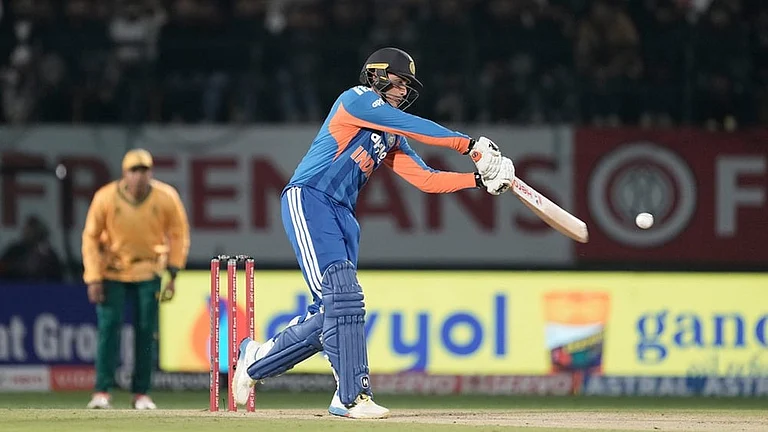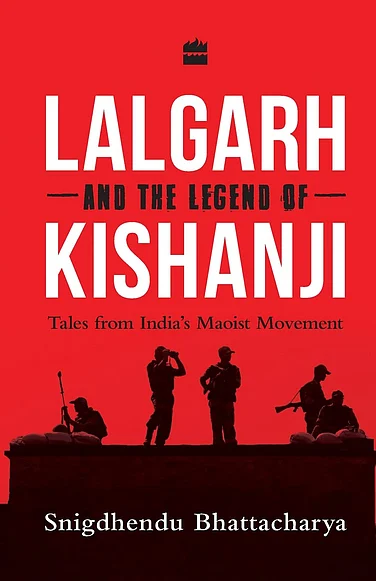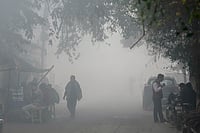I, Amish, had read and heard the Ramayana in a bookish way. I knew the stories of many versions of the Ramayana, but had not visited all the locations. I had traveled to and prayed at the temples in Ayodhya, Nashik, Anegundi and Rameswaram, but not beyond these places on the fabled Ram Van Gaman path, i.e., Lord Ram’s route in the jungles during his exile. I had to depend on my friend Sujata to uplift my bookish knowledge with real-world experiences, while shooting for a TV show.
Together with our production team, we had the pleasure of discovering many of these stories with wonder and the wisdom of the saints and common people, at places where the Ramayana is not just a story, but is actually alive. For, the Ramayana does animate life itself in places across India. And through this journey, we discovered many such places. Here, we hope to talk of one such place.
It’s a place where the Ramayana story lives and breathes—in the land, in the air, in the faith of the devotees, in their chants and invocations, in its very core. Where the certainty of the epic makes you feel like you might run into its characters, when you turn a corner on the street.
ALSO READ: Who Is Ram? Defining The Enigma
We are in Chitrakoot, treading the sacred geography of the Ramayana trail. We are shooting for a mini-series called Legends of the Ramayana with Amish that we are producing for Discovery Plus. But there are a lot of surprises in store for us as we start to dig deep through the layers of history, mystery and myth.
Ramayana—literally translates to ‘Ram’s ayan’ or ‘the journey of Ram’. In the epic, this journey is sparked by Kaikeyi—Lord Ram’s step-mother who wants her son Prince Bharat to become the Crown Prince. She strategically invokes some boons and orchestrates a 14-year exile for Lord Ram in the forest. In order to uphold his father’s dharma, Lord Ram willingly concedes and sets out on a path that he believes that destiny has scripted for him.
Do the pit-stops described on this path that Lord Ram tread still exist in India today? Or were they just a figment of the great author Maharishi Valmiki ji’s imagination. Where did Lord Ram, accompanied by Sita Maa and Prince Lakshman live for those 14-years? And why did they relocate from one place to another? We are setting out to explore some of this intriguing ‘geo-mythology’ or as many people will say itihasa, for our docu-series.
ALSO READ: Lesson On Environment From Ramayan
From the starting point in Ayodhya, the erstwhile capital of the legendary Ikshvaku kings of Kosala, we traveled to Prayagraj where Lord Ram, Sita Maa and Prince Lakshman had met the great sage, Bharadwaj. They say that it was this learned Rishi who advised them to settle in Chitrakoot—‘the hill of many wonders’. Why Chitrakoot, we wonder!
Located on the banks of the River Mandakini, at the borders of present-day Uttar Pradesh and Madhya Pradesh, Chitrakoot was considered the abode of the Gods. It is believed that the trinity of supreme divinity in Hinduism—Lord Brahma, Lord Vishnu and Lord Shiva had a presence here. Many legendary sages lived and meditated in the precincts of its hallowed forests. As per the Ramayana legend, when Lord Ram, Sita Maa and Prince Lakshman reached Chitrakoot, the first sage they met was Valmiki—their own creator. Brilliant! As the author of the epic, Maharishi Valmiki had used his own surrogate as a character in his own story.
Maharishi Valmiki pointed the trio to a verdant hill. It is here that Prince Lakshman built the ‘Param Kutir’, a sturdy little cottage where the three of them settled down peacefully. Locals believe that they stayed here for 11 years, 11 months and 11 days of the 14-year exile period.
Even today, the Kamadgiri hill dominates the spiritual landscape of the region and is one of the most significant religious sites in the town of Chitrakoot. Pilgrims perform a 5-km circumambulation of the hill to seek divine blessings of the Lord Kamadnath—fulfiller of wishes.
Temples, big and small, punctuate this pathway and the fragrance of incense charges the air with spiritual energy. Thousands of devotees walk this circuit with barefeet, while they chant and sing hymns along the way. Yet others perform the dandvat pranam where they pay obeisance by alternately standing erect—and then falling prostrate on the ground. A separate pathway has been created for people performing this ritual.
For those with a penchant for adventure, there’s another amazing place on the outskirts of Chitrakoot. Tucked away in a lush mountain is a two-cave system, with a river of myths flowing deep within it! To beat the throng of pilgrims, we reach there early in the morning and make our way single-file, into the interior of the caves. There are no Google Maps to lead us into this underground labyrinth. All of a sudden, we find ourselves in cold, knee-deep water. This is, we are told, the Gupt Godavari river. Then hidden away in a chasm, we stumble into a Pandit seated in a tiny shrine. He is equally surprised to see us with camera and all—but nonchalantly offers us an explanation for the water at our feet.
ALSO READ: In The Land Of Asurs Where God Is Formless
He tells us that during their exile, Ram and Lakshman held court in these caves. Many gods and goddesses came here to seek their blessings. Born in Nashik, almost 1000-km away in Maharashtra, the river Goddess, Godavari, expressed an intense desire to visit Lord Ram. But her parents refused permission. So she came secretly, winding her way under the depths of the earth and emerging in the caves of Chitrakoot.
On our way out, we see a peculiar outcrop of black rock on the roof of the bigger cave. This is distinctly different from the endemic limestone rock within the cave. As the story goes, one day, Sita Maa was bathing in the pool here when Mayank the monster cast an evil eye on her. When Lord Lakshman found out, he was enraged. He picked up Mayank and flung him to the roof of the cave, where he remains stuck—to this day.
We leave the caves intrigued by these stories. The Ramayana has left its mark everywhere. We are now heading to the Ram Ghat. Here, the Mandakini flows gently, like she has for thousands of years. As per legend, the area was once stricken by severe drought. The river was brought to earth by the penance of Mahasati Anasuya, the wife of the great sage, Atri. The banks of the river are lined with colourful boats that give it a festive look. Devotees meditate here and then take a holy dip in the river.
ALSO READ: Asura: The Last Words Uttered By Ravan
As the skies turned into a scarlet dusk, we marvel at the perfect blend of divinity, serenity and natural beauty. No wonder if the great sages had asked Lord Ram, Sita Maa and Prince Lakshman to stay in Chitrakoot.
(This appeared in the print edition as "The Sacred Trail")
Amish is the author of the Ram Chandra series & the Shiva trilogy
Sujata Kulshreshtha is the founder of Wide Angle Films, a documentary film production company

























